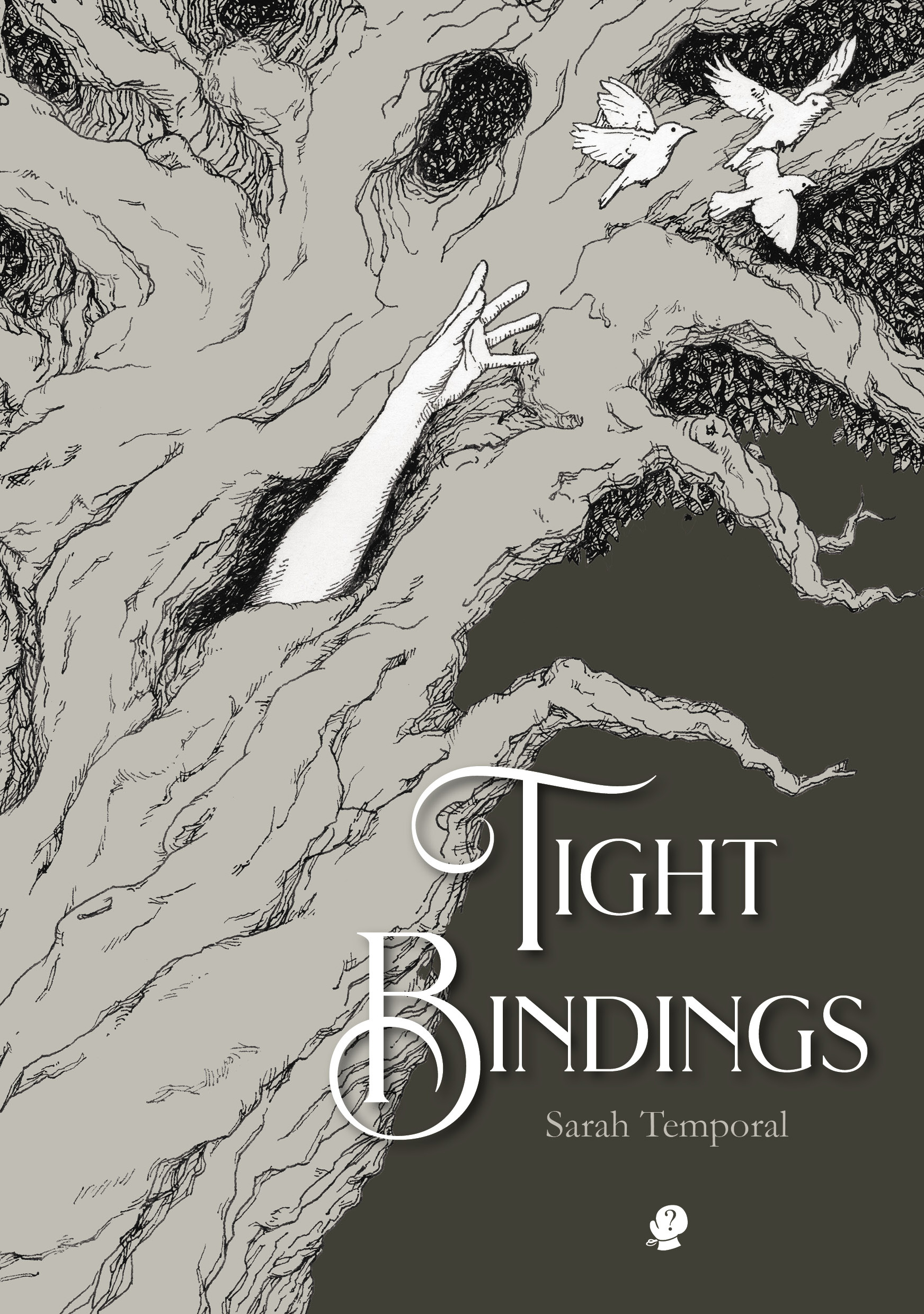 Reviewed by Magdalena Ball
Reviewed by Magdalena Ball
Tight Bindings
By Sarah Temporal
Puncher & Wattmann
ISBN: 9781923099210, $27, Aug 2024
Sarah Temporal is so much a part of the Australian poetry landscape: teacher, mentor, coordinator of the well known spoken-word poetry platform ‘Poets Out Loud’ and regular performer, that it’s hard to believe Tight Bindings is her first book. Tight Bindings is an assured debut, ambitious and sophisticated. The poems pivot around the birth of a daughter, expanding outward from child to woman to humanity to universe and back again to the daughter. A cycle that repeats itself, Fibonacci-like throughout the book, utilising fairy tales, legend, place, and experience to create an overarching story of female transformation that feels simultaneously intimate and mythic.
The collection feels expansive but it’s not large – just 19 poems, structured into sections that trace what seems like a coming of age – breaking/Becoming, Singing, and Transforming, and opens with the beautiful “Three Secrets” – which gives the book its title via a difficult, caesarian birth:
I did not give birth to my daughter.
After labouring two days, three long nights,
she was trapped in the tight bindings of my body.
A doctor cut through to release her—-
Many of the poems end with a QR code that, when scanned, takes you to a performance by Temporal of that work, a novel idea that showcases Temporal’s performance skills. The poems and their delivery both on the page, and on video, are quietly ferocious, delivered with warmth and gentleness that immediately draws the reader in, but underscored with a power that harkens to the title – of all the intensity held within the bindings. These bindings might be our bodies but also social norms, constrictions of sex, of desire, roles or places of entrapment.
Places aren’t always a trap, they are also full of life and their own ecosystems, such as the anthropomorphised forest of “Blackheath”, the bravado that makes light of a dying Barramundi in “In the Kimberley” or the extensive sensuality of a beach in South Australia’s “Lameroo”:
Take refuge in fat-leaved mangrove shade
take refuge in humid decay
hide inside the gust that whispers storm coming
These locations are animated by sounds – both the natural ones of place, and the innate sounds of the poem itself such as alliteration, rhymes, line breaks that take on the shape of breath, motion and transition. There is a constant mingling of the immediate joy of the moment and a deep sadness—the pain of all that has been and will be lost which is embodied. The transition between sorrow and joy feels organic and true, as the father’s ax on a tree:
There is no aggression,
no strain in his actions.
He simply invites the wood to become
what it always was. (“Five Pictures of My Father Chopping Wood”)
All of the poems have a performative quality to them, even those without a video QR code. Temporal builds breath and structure into the work, and guides the eye down the page–sometimes vertically and sometimes horizontally. Repetitions are a feature of this work, such as the anaphora of first words like “Now” and whole phrases like “We live/close to the sky” in the sideways poem “Close to the sky” or the hypnotic use of “I” and “it is” in “And Then”. These are poems that work best read aloud.
Some of the most powerful poems are deeply personal, like “After the Transplant” which takes us right into the open chest cavity of Temporal’s partner, a moment of tenderness and vulnerability. Like the other hospital poems in this book, there is also a battle cry for life that mirrors the opening birth as well as the poems that follow in the “Singing” section:
They had distributed for safe-keeping
all your life’s energy among a huge forest of machinery puffing and pulsing:
your breath transferred to a pumping bellows,
your heartbeat relocated to a cave-like screen
on which other lines ran, gold, blue and green.An ecosystem composed
of human brilliant
and compassion.
Temporal builds the conjunction between birth and death throughout Tight Bindings, that leads to wonder and joy, even at the most difficult, most lost or fraught moments.
The last section of the book, “Transforming” leans into mythology, reworking fairy tales so that the oppressed female is a force of change, especially Cinderella and Rapunzel. The poems move back and forth between the story and the page, the fictive dream and the metapoetic. The final poem, “Rapunzel” has a performance barcode, and it’s worth the cost of the book alone to watch that one performed with such intimate grace, the timeless story becoming modern:
When you cannot break out,
You may simply break.
Or perhaps, become something
The story cannot hold.
Her belly is swelling, her body telling
A secret that cannot be contained
The book ends with the same character it began with, the daughter, and yet something has transformed. There is a sense in which the old mythologies have lifted, the bindings have given and the future is hopeful, held in the powerful image of an innocent face and a ray of light. Tight Bindings is a beautiful debut, lightly presented and easy to read but full of wonder.